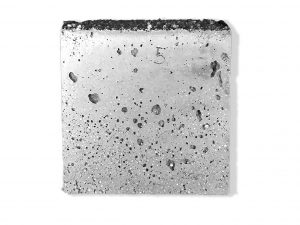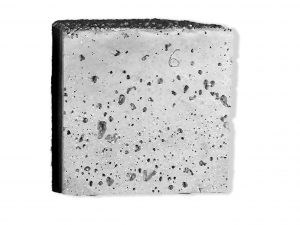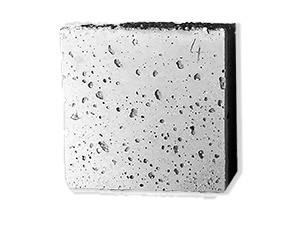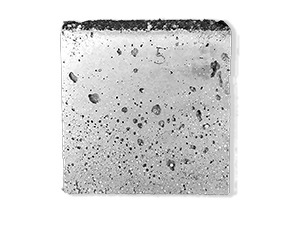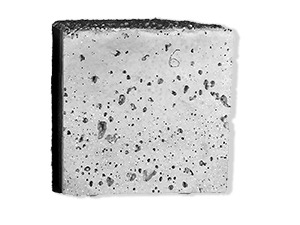Skip to content
In these FAQs section we serve some questions and answers about the properties and applicability of ICL-PS-LWC:
“ICL-PS-LWC” is a special type of lightweight concrete that contains primarily cement, water, sand, PS beads and “ICL-CA” (chemical admixture).
In practice, from step-resistant thermal insulation systems to masonry and block elements to load-bearing structural elements, a wide variety of material groups can be produced from our lightweight concrete.
If you have a specific usability question, please contact us and we will keep you fully informed of the options. 
Mortar and plaster systems can also be made using the additive.
Our lightweight concrete is characterized by high compressive and flexural strength, high watertightness and fire resistance, as well as very good sound and thermal insulation.
Whether used as a masonry unit or monolithic concrete, the construction costs of a building structure can be significantly reduced, especially in terms of material costs and thermal insulation costs.
Léteznek előre gyártott zsaluzati rendszerek, amelyeket úgy alakítanak ki, hogy már eleve tartalmazzák a különböző kizárásokat. A meglévő alapokon felállítják a zsaluzati rendszert, és a vasbetétek behelyezése után feltöltik a zsaluzatot a transzportbentonként előállított/lekevert “ICL-PS-LWC“-könnyűbetonnal.
There are prefabricated formwork systems that are designed to already include the various exclusions. The formwork system will be set up on the existing foundations and, after the reinforcement of the reinforcements, the formwork will be filled with the “ICL-PS-LWC” lightweight concrete produced / mixed per transport concrete.
Fire resistance is an extremely important safety feature for a building structure.
High watertightness means that moisture cannot penetrate the structure, so on the one hand water cannot “damage” the applied iron insert and on the other hand the finished wall structure is less (or not at all) will be exposed to mold.
For a given type of material, the thermal conductivity can be characterized by the thermal conductivity factor (λ) and the thermal conductivity resistance (Rc).
For “ICL-PS-LWC” the thermal conductivity is 0.5-0.7*, while for conventional normal concretes this value is 1.18-1.24.
(* values measured for our highest density concrete; this value is much more favorable for higher PS contents)
FRAGEN & ANTWORTEN
Fragen und Antworten zu den Eigenschaften und der Anwendung von ICL-PS-LWC:
“ICL-PS-LWC” ist eine spezielle Art von Leichtbeton, der hauptsächlich Zement, Wasser, Sand, Polystyrolperlen und “ICL-CA” (chemical admixture; ca. 5 kg / m3) enthält.
In der Praxis kann aus unserem Leichtbeton eine Vielzahl von Materialgruppen hergestellt werden. Von trittfesten Wärmedämmsystemen über Mauerwerk und Blockelemente bis hin zu tragenden Strukturelementen.
Mit dem Additiv können auch Mörtel- und Putzsysteme hergestellt werden.
Unser Leichtbeton zeichnet sich durch hohe Druck– und Biegefestigkeit, gute Wasserdichtigkeit und hohe Feuerbeständigkeit sowie gute Schall– und Wärmedämmung aus.
Unabhängig davon, ob es sich um ein Mauerwerk oder einen monolithischen Beton handelt, können die Baukosten einer Gebäudestruktur erheblich gesenkt werden, insbesondere die Materialkosten und die Kosten für die Wärmedämmung.
Es gibt vorgefertigte Schalungssysteme, die die verschiedenen Ausschlüsse bereits enthalten. Das Schalungssystem wird auf den vorhandenen Fundamenten errichtet. Nachdem die Bewehrungseinsätze installiert wurden, wird die Schalung mit Leichtbeton “ICL-PS-LWC” gefüllt, der als Transportbeton hergestellt/gemischt wurde.
Feuerbeständigkeit ist ein äußerst wichtiges Sicherheitsmerkmal für eine Gebäudestruktur.
Eine gute Wasserdichtigkeit bedeutet, dass keine Feuchtigkeit in die Struktur eindringen kann. So dass einerseits Wasser den verwendeten Eiseneinsatz nicht beschädigen kann und andererseits die fertige Wandstruktur ist geringer (oder überhaupt nicht) dem Schimmel ausgesetzt.
Für einen gegebenen Materialtyp kann die Wärmeleitfähigkeit durch den Wärmeleitfähigkeitsfaktor (λ) und den Wärmeleitfähigkeitswiderstand (Rc) bezeichnet werden.
Im Fall von “ICL-PS-LWC” beträgt die Wärmeleitfähigkeit 0,5 bis 0,7* , während dieser Wert für herkömmliche Normalbetone beträgt 1,18-1,24.
(* Werte gemessen für unseren Beton mit der höchsten Schüttdichte; dieser Wert ist für höhere PS-Gehalte viel günstiger)

